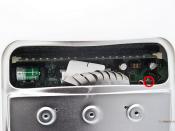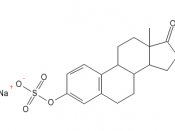Think of a thoroughbred, what comes to mind? A fast and graceful racehorse right? Now imagine the thoroughbred with knees the size of watermelons dripping blood and puss because she is mistreated at a PMU farm. An ex-PMU producer tells the fate of this mare (one he was partial to) to investigators of Equine Advocates, INC. This man favored the poor horse, who was too weak to fight for her share of food and water, so he gave her little extras like oats fed away from the others, medicine to help her knees, and general concern for her well being. His superior, Frank, did not like this at all. This upset him so much that "he took the tractor and chased her around until her legs ripped in half. He left her to bleed to death..." (Industry 3). Many other horses have and continue to suffer gruesome. How many must face such a horrible fate for the price of menopause symptom relief that Premarin promises? There are several alternatives to PMU products that are derived from plants.
Hormone replacement therapy for women doesn't need to include the cruel treatment and death of tens of thousands of horses and the appalling lives they must live in the conditions of PMU production farms.
Someone may ask what do horses have anything to do with hormone replacement therapy (HRT)? The answer is quite simple really; Premarin. With sales topping over a billion dollars in 1995, Premarin, a menopause symptom relief drug, available for over 54 years, is the most prescribed drug in the United States (Harper 3). When broken down Premarin's name reveals its secret ingredient, PREgnant MARes' urINe, PMU for short (Farms Controversy 2). Premarin is a hormone replacement drug that only replaces estrogen, not progesterone or...


